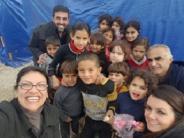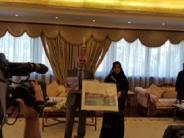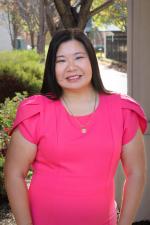An Eye Opening Study Trip - March 02, 2016
Fourteen days, three countries, eight elected Arab American public servants, twenty five meetings with broad and diverse spectrum of ambassadors, policy makers, businesspeople, non-governmental organizations, strategic studies institutes, American universities and visits to three refugee camps summarize my trip to the United Arab Emirates, Egypt and Lebanon as a member of the Arab American Institute's Leadership Council. The purpose of the trip was to gain better understanding of the region's culture, challenges, opportunities and bilateral relationships with the United States. There is so much more to share than the allotted space in this publication so I will emphasize on what impressed me the most in each country and how it relates to us in our community and the country.
We've all heard and probably seen some of the United Arab Emirates (UAE)'s construction and development especially in Dubai, home to the tallest building in the world, the Burj Kalifa. United States Ambassador Barbara Leaf and her team of political and economic advisors briefed our delegation and taught us that not only is the UAE an important US ally, but it is our largest trading partner in the region. Meeting with HE Dr. Amal Al Qubaisi, Speaker of the Federal National Council, and other Emirati officials we learned how the UAE is implementing an ambitious strategic initiative to diversify its revenues and be independent of oil revenues by the year 2030. Although it pales in scale, diversifying our revenues and being highly dependent on property taxes is one of the priorities I will be working on tirelessly this year. Have you heard of Masdar City? www.masdar.ae It's the UAE's sustainable community using renewable energy and built exclusively from recycled materials. Interestingly, they use the same slogan as Foster City; "live, work and play". Dr. Al Qubaisi was just one of the female leaders I met in the UAE, a country that is leading the region in its efforts to empower Emirati women leaders in government, business and in all sectors of the society. Based on my observation, the women in the UAE are doing an excellent job and giving their male counterparts a run for their money!
While the UAE is a young country, Egypt is very rich in its history, culture and contribution to civilization. Egypt and its stability are extremely important to international trade and US interest vis-a vis the Suez Canal and the fact that it has the largest population in the Arab world, as we learned during our meeting with US Ambassador to Egypt, Steven Beecroft. The country is currently going through a very sensitive period. The threat of terrorism in Egypt is real but it is unfortunate that it seems the population is being asked to choose between security and civil rights and freedom. That is something that I hope we will never entertain in the US and makes me thankful and appreciative for the security and freedom we enjoy that we take for granted. What's more worrisome is that more than 45% of the population is under the age of 35 and they are not being heard or given the opportunity to play a role in determining the future of the country. That is a recipe for disaster.
The third country we visited was Lebanon, where I was born and raised prior to immigrating to the United States. Being away from Lebanon for some years, I was excited to be there and this trip gave me a different perspective. Lebanon never ceases to amaze me with its resiliency; decades of civil war and now hosting over 1.5 million Syrian refugees for a country with a population of 4.5 millions! To put it in perspective, these numbers equate to the United States hosting 106 million refugees. Yet somehow Lebanon survives on insufficient assistance from the underfunded United Nations Relief and Works Agency and the international community. The highlights of this trip were the visits to the refugee camps; they were also the most heartbreaking experiences. We visited the Shatila and Burj El Barajneh refugee camps in Beirut. The inhabitants of Burj El Barajneh are mostly Palestinians refugees from 1948, and it was disheartening to witness the conditions of the camps and to see that the situation has deteriorated since my last visit in 1980 from terrible to horrendous. The population of the camp has doubled since 2011 and the beginning of the Syrian war. It is estimated that between 20,000 to 40,000 Syrians have come to Shatila camp, an area of one square kilometer!
Although I've been following the human suffering of the Syrian war for the past five years, I was not prepared for what I saw during our visit to Barelias Syrian refugee camp in the Bekaa Valley. The blue tents supplied by the United Nations High Commission for Refugees make the difference between the Palestinian camps we visited in Beirut and the new Syrian camps were very evident. The living conditions in Barelias camp are appalling, and the refugees lack access to their basic needs and medical care. Hearing the stories of the children and their parents first-hand brought tears to our eyes.
This trip has impacted me on a personal, professional and human level. It was an enriching experience that I'm glad to share with you as sometimes we tend to forget how great our country is regardless of the challenges we have. On the local level here in Foster City or the Peninsula in general, it's important to recognize that no matter what we believe our growing pains are, they pale in comparison to so many. Tolerance, community and diversity are the foundation for the strength of character of a people and the quality of their place.
I would be remissed if I did not thank the Arab American Institute www.aaiusa.org for inviting me to be part of the Arab American Leadership Council and my colleagues in the delegation for their friendship and for making this trip an exceptional experience.



